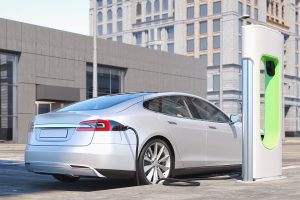Electric Cars and Traditional Road Rules: Defining Defects in Futuristic Vehicles
 Michael Babboni
Recalls
Michael Babboni
Recalls
The automotive industry accelerates its innovation almost to a scary degree--so much so that there are now electric cars available on many of America’s roads.
Florida is one such avid adopter of the electric vehicle trend, especially since it has become more affordable and easier to maintain than traditional ones. To date, Florida has seen 28,000 electric vehicles on its roads, making it the state with the second
highest number of these futuristic cars.
While they share a lot of characteristics with the traditional gasoline- and diesel-fueled variants, the futuristic stamp does have some trade-offs, especially in accidents.
The Case of Fires with Tesla’s Futuristic Cars
In Florida, there have already been two cases where Tesla’s electric vehicles have caught fire. In 2018, two teenagers got into a fatal accident in Fort Lauderdale when, after losing control of the wheel, the car crashed and caught fire
In 2019, a Tesla Model S spun out of control, hit a tree, and caught fire, killing a man who could not be rescued because of car door handle malfunction.
In both cases, it had been emphasized that the cars should not have caught fire. Instead, the drivers and passenger should have been rescued, had the fires not started or the doors prevented them from being saved.
These are cases in Florida alone, but the reality is that electric cars are already a thing of the present. With this comes the issues of potential accidents and manufacture liabilities that need to be explored in the legal sense, in terms of accidents.
Defining Car Defects in Futuristic Cars
When it comes to
Florida’s products liability, it can boil down to manufacturing and design defects. It is crucial to find out which is the most likely cause of an accident. In terms of a futuristic car defect like what occurred with Tesla’s electric vehicle, it is highly likely that it will be considered as a design defect.
Manufacturing defects are far from intentional, as they tend to be a mistake in the overall production process. While the burden of responsibility is still shouldered by the maker of the car, it serves more as an assurance that the creator will likely to everything it can to be stringent with its manufacturing guidelines and safety process.
Under Florida law on product liability, the defendant becomes liable for any injury caused by the plaintiff if the product is defined as “unreasonably dangerous.” A product is considered as such if
it does not perform safely and as expected of its design. For instance, if an ordinary consumer expects that a door will have a noticeable handle that can be used to open a car door in the event of an accident and it does not, then it qualifies as dangerous design.
As electric vehicles became a major part of the automotive landscape, it now becomes important to define how accidents can be influenced by changing laws related to car defects. Just as the cars innovate to accommodate new design ideas, the law will also need to adjust and explore other ways by which the consequences of these defects may be dealt with in court.
